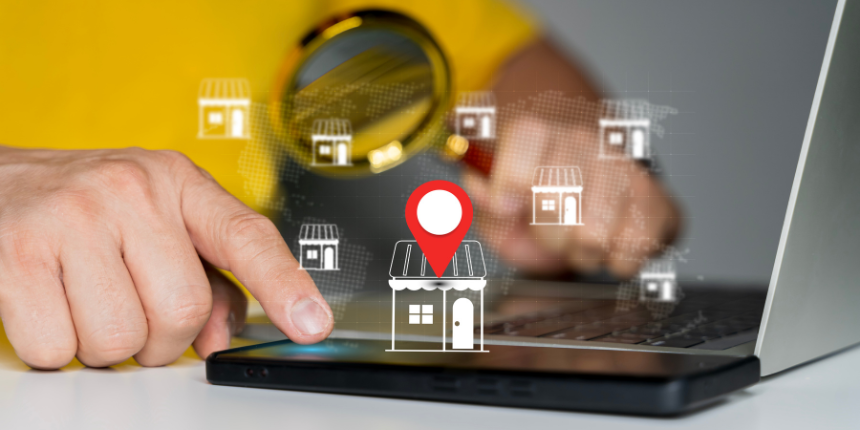
Maximize your local presence through strategic location management.

Writing in the Harvard Business Review, Chuck Martin talks of beacons as “the missing piece in the whole mobile-shopping puzzle”. He points to the technology’s ability to communicate with an individual, in a personalised way, without them having to do anything at all. This, he says, helps to bypass what is “usually a major hurdle for any mobile shopping technology”, because it makes that engagement completely effortless for the customer. Beacon technology has been steadily gathering pace since Apple launched the iBeacon in 2013, and recently it has begun to take the world of mobile by storm. A BI Intelligence report at the start of the year said that beacons would be driving $44 billion in retail sales by 2016, up from the $4 billion prediction for 2015. Then last month came the big news that Apple and IBM have teamed up on a host of new apps incorporating analytics and iBeacons. Some say that retail is on the verge of “total reinvention”, and there’s no reason why this should only be applicable to large brands. Just as it’s no longer acceptable for businesses of any size to not have a website, it seems likely that soon, national and local businesses alike will have no choice but to join the technology revolution broadly labelled the Internet of Things (IoT).

Source: http://www.forbes.com/
Beacons are small, Bluetooth-enabled devices that attach to a wall or object inside a shop or customer area. They can often be just a little sticker, which is easy and unobtrusive for a retailer to use. Beacon technology is able to pinpoint the location of customers in stores and other places and to deliver messages to their mobile devices. Specifically, a beacon emits a Bluetooth low-energy (BLE) signal that a retailer’s mobile app can pick up on when coming within range of that signal. Beacons are important because they allow more precise targeting of customers in a given location. A customer is generally in control of the apps that are set to leverage beacon technology, meaning that the retailer or business has preset user permission to contact them. Half of beacon-triggered messages sent currently are some form of coupon, according to Shopkick. Mobile coupons are a significant part of this market. Mobile couponing app company RetailMeNot claims that its offers alone influenced $3.5 billion in retail sales in 2013. However beyond offering digital coupons, the small wireless devices can expand loyalty efforts, provide an indoor heat maps of customer engagement and conduct contactless payments. If they haven’t done so already, 2016 will undoubtedly be the year that small and local businesses should begin getting to grips with beacon technology. Here are five important reasons why…
Subscribe to our monthly newsletter.
For more than a decade, retailers in particular have dreamt of the time when they can identify single customers, and target them personally with tailored offers and experiences. Being able to bridge that gap between offline and digital has been held by many as the holy grail of data-driven marketing. Beacon-enabled apps are able to collect data on customers’ spending habits and product preferences in store, and marry that with other channel data a retailer holds on an individual. This opens up a wealth of opportunities for CRM, and could allow retailers to establish integrated online and offline profiles and loyalty programs for their customers.

Source: https://www.facebook.com/
The cost of beacon technology is negligible in most cases. Prices can begin at around £20, or less! Facebook also now offers beacon technology at no cost to retailers who have Facebook pages. It uses “Place Tips” (a feature that shows users information about the places they visit) to send information to customers who have the Facebook mobile app open on their phones.
Typically, only the largest brands have the people and resources to experiment with emerging technologies. However the low-cost entry point, and ease of use associated with beacon technology turns this notion on its head, and creates a level playing field for local businesses. In many cases, to get going, it’s simply a case of opening the packaging and you’re away!
As mobile penetration continues to grow, there’s a pressing need for retailers particularly to bring this channel into the CRM and shopping mix. Mobile is increasingly the channel of choice for the majority of customers, and particularly millennials. Studies show that 42% of US consumers prefer to get offers delivered via text and 97% of mobile subscribers will read a text within 15 minutes. Research commissioned by Oracle Responsys in late 2013 revealed that half of consumers report they are likely to purchase from a brand when their mobile communications are part of an orchestrated experience that unfolds over time and across channels. It therefore makes growing sense for local stores to capture customer attention when they are nearby, and divert them away from competitors.
2016 will be the year when local retailers need to move away from a transaction mindset, and think more about the customer in-store experience, personalising it as much as they can. Beacon technology makes this possible. As Ad Age explains “the user’s phone is the navigation system, mapping to-do lists to the layout of large-footprint stores with efficiency and grace. Exclusive and supplemental content delivered at the right time in the retail experience will motivate purchases.” If beacon technology isn’t already on a local business’ radar, we believe it should be top of the ‘to do’ list for 2016.
Maximize your local presence through strategic location management.
Maximize your local presence through strategic location management.
Subscribe to our monthly newsletter.